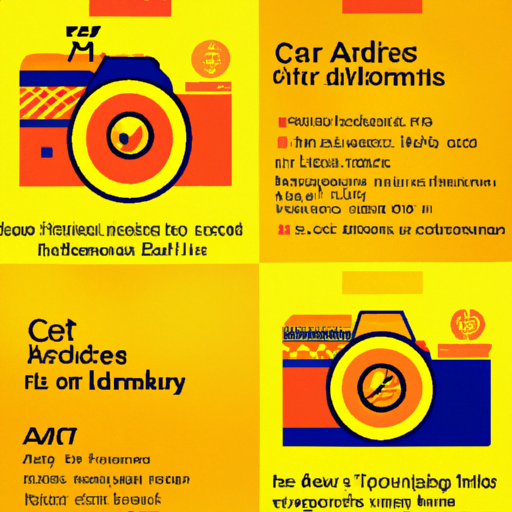
-
Table of Contents
- Crafting Visual Identity for Brands: Guidelines and Best Practices
- The Importance of Visual Identity
- Key Elements of Visual Identity
- 1. Logo
- 2. Colors
- 3. Typography
- 4. Imagery
- Best Practices for Crafting Visual Identity
- 1. Understand Your Brand
- 2. Conduct Market Research
- 3. Keep It Simple
- 4. Ensure Consistency
- 5. Test and Iterate
- Case Studies: Successful Visual Identity Examples
- 1. Apple
- 2. Airbnb
Crafting Visual Identity for Brands: Guidelines and Best Practices

Visual identity plays a crucial role in shaping a brand’s perception and establishing a strong connection with its target audience. It encompasses various elements such as logos, colors, typography, and imagery, which collectively communicate the brand’s values, personality, and purpose. Crafting a compelling visual identity requires careful consideration and adherence to certain guidelines and best practices. In this article, we will explore the key principles and strategies for creating an effective visual identity for brands.
The Importance of Visual Identity
A well-crafted visual identity serves as the face of a brand, instantly recognizable and memorable. It helps differentiate a brand from its competitors and creates a lasting impression on consumers. Here are some reasons why visual identity is crucial for brands:
- Brand Recognition: A consistent visual identity helps consumers recognize and recall a brand more easily. Think of iconic logos like Nike’s swoosh or Apple’s bitten apple, which are instantly associated with their respective brands.
- Brand Differentiation: In a crowded marketplace, a unique visual identity helps a brand stand out and differentiate itself from competitors. It allows consumers to quickly identify and choose a brand that aligns with their preferences and values.
- Brand Trust: A well-designed visual identity instills trust and credibility in consumers. It conveys professionalism, attention to detail, and a commitment to quality, which are essential for building long-term relationships with customers.
- Brand Consistency: A consistent visual identity across all touchpoints, including websites, packaging, advertisements, and social media, creates a cohesive brand experience. It ensures that consumers have a unified perception of the brand, reinforcing its values and messaging.
Key Elements of Visual Identity
Creating a visual identity involves several key elements that work together to convey the brand’s essence. Let’s explore these elements in detail:
1. Logo
The logo is the most recognizable element of a brand’s visual identity. It serves as a visual representation of the brand and encapsulates its personality and values. A well-designed logo should be simple, memorable, and versatile. It should work well across different mediums and sizes, ensuring its visibility and impact.
For example, the Nike logo is a simple swoosh that represents movement and athleticism. It is instantly recognizable and works well on various products, from shoes to apparel. Another example is the Coca-Cola logo, which has remained relatively unchanged for over a century, reflecting the brand’s timeless appeal.
2. Colors
Colors play a crucial role in evoking emotions and associations. They can convey a brand’s personality, differentiate it from competitors, and create a sense of harmony across touchpoints. When choosing colors for a visual identity, it is essential to consider their psychological impact and cultural connotations.
For instance, red is often associated with energy, passion, and excitement, making it suitable for brands like Coca-Cola and Red Bull. On the other hand, blue is associated with trust, reliability, and calmness, making it a popular choice for brands like IBM and Facebook.
3. Typography
Typography refers to the style, size, and arrangement of text in a visual identity. It plays a crucial role in conveying the brand’s tone, personality, and message. The choice of typography should align with the brand’s values and target audience.
For example, a luxury brand may opt for elegant and sophisticated typefaces, while a tech startup may choose modern and minimalistic fonts. It is important to ensure that the typography is legible across different mediums and sizes, maintaining consistency and readability.
4. Imagery
Imagery, including photographs, illustrations, and graphics, can enhance a brand’s visual identity and evoke specific emotions or associations. The choice of imagery should align with the brand’s values and target audience, reinforcing its messaging and positioning.
For instance, a fitness brand may use images of active individuals engaging in physical activities to convey a sense of energy and vitality. In contrast, a sustainable fashion brand may use nature-inspired imagery to highlight its commitment to the environment.
Best Practices for Crafting Visual Identity
Now that we have explored the key elements of visual identity, let’s delve into some best practices for crafting a compelling and effective visual identity:
1. Understand Your Brand
Before embarking on the visual identity creation process, it is crucial to have a deep understanding of your brand’s values, personality, target audience, and positioning. This knowledge will serve as a foundation for making informed decisions about the visual elements that best represent your brand.
2. Conduct Market Research
Market research plays a vital role in understanding your target audience’s preferences, perceptions, and expectations. Analyze your competitors’ visual identities to identify gaps and opportunities for differentiation. This research will help you create a visual identity that resonates with your target audience and stands out in the market.
3. Keep It Simple
Simplicity is key when it comes to visual identity. A cluttered or complex design can confuse and dilute the brand’s message. Aim for simplicity and clarity in your logo, colors, typography, and imagery. Remember, less is often more.
4. Ensure Consistency
Consistency is crucial for building a strong and recognizable visual identity. Use the same logo, colors, typography, and imagery across all touchpoints to create a cohesive brand experience. Consistency reinforces the brand’s values and helps consumers develop a strong association with the brand.
5. Test and Iterate
Once you have created your visual identity, it is essential to test it with your target audience and gather feedback. Conduct surveys, focus groups, or A/B testing to understand how your visual identity is perceived and make necessary adjustments. Iteration is a natural part of the design process and allows you to refine your visual identity based on real-world feedback.
Case Studies: Successful Visual Identity Examples
Let’s take a look at some successful visual identity examples that have effectively communicated the brand’s values and resonated with their target audience:
1. Apple
Apple’s visual identity is synonymous with simplicity, elegance, and innovation. Its logo, a bitten apple, is instantly recognizable and has become an iconic symbol of the brand. The use of minimalist design, sleek typography, and clean imagery across all touchpoints creates a cohesive and premium brand experience.
2. Airbnb
Airbnb’s visual identity reflects its core values of community, belonging, and diversity. The brand’s logo, known as the “Bélo,” is a combination of a heart, a location pin
